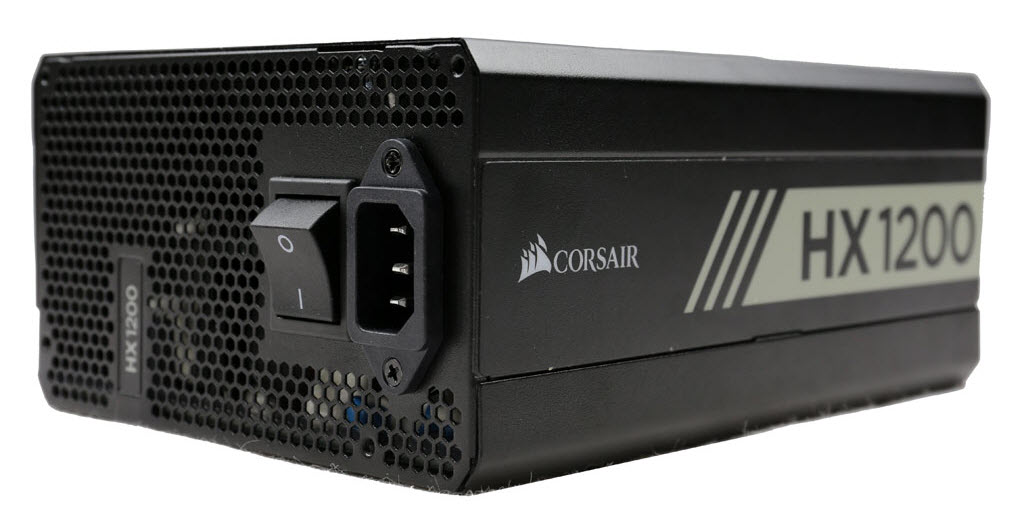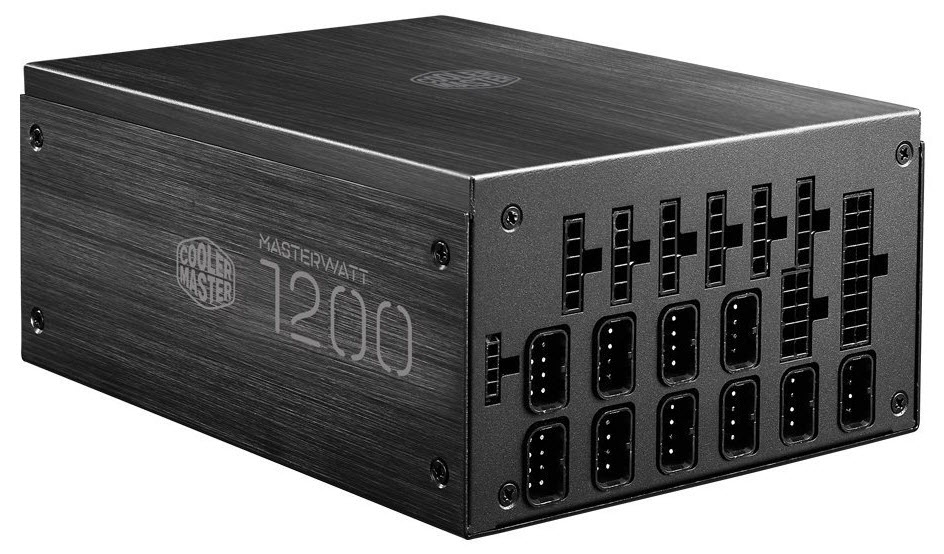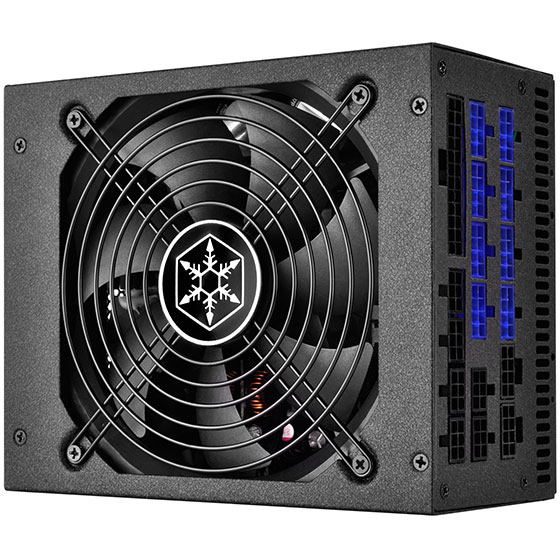Corsair HX1200 PSU Review
Why you can trust Tom's Hardware
Load Regulation, Hold-Up Time & Inrush Current
To learn more about our PSU tests and methodology, please check out How We Test Power Supply Units.
Primary Rails And 5VSB Load Regulation
Load Regulation testing is detailed here.
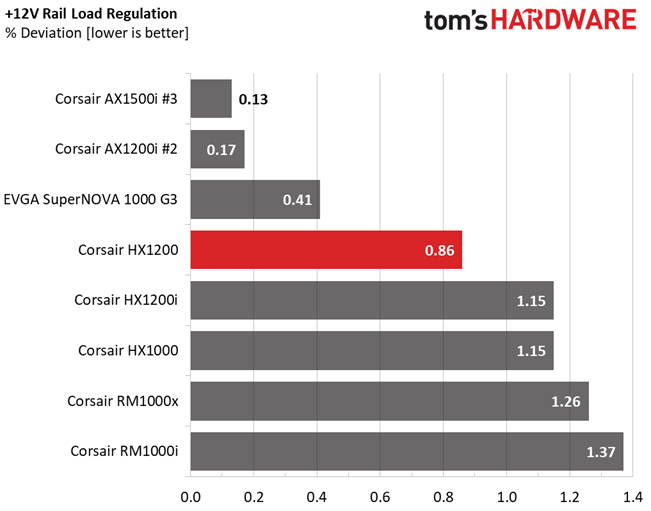
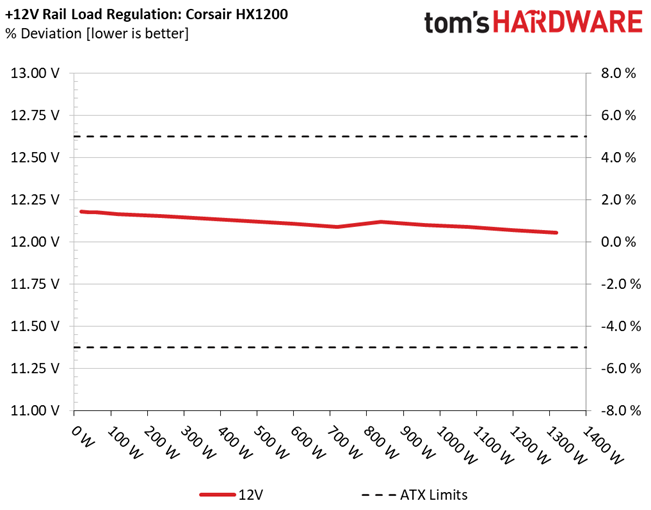

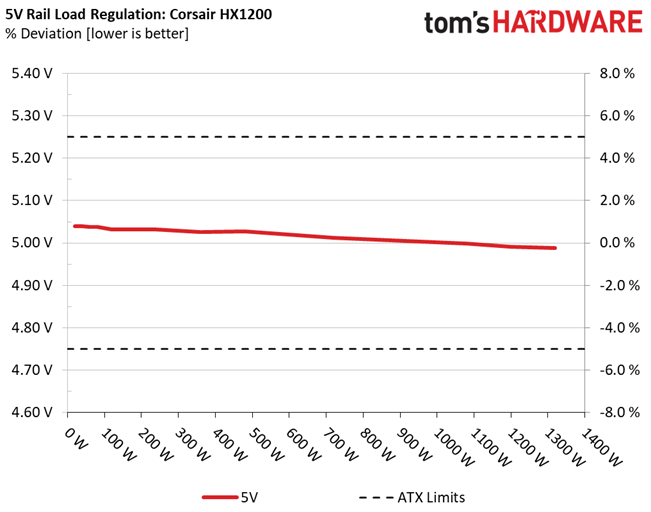
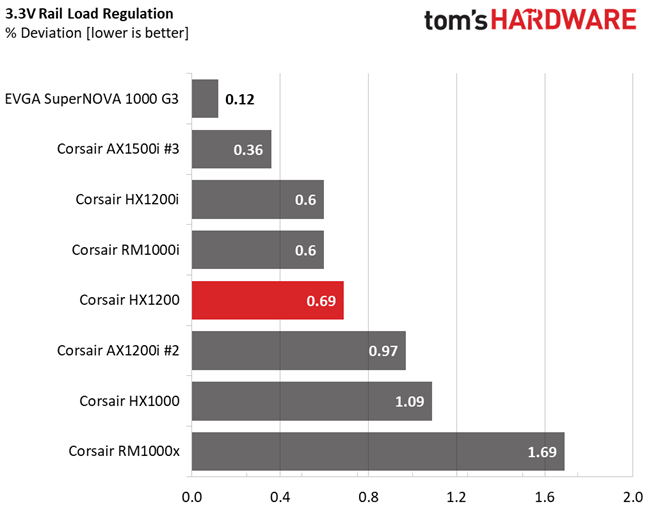
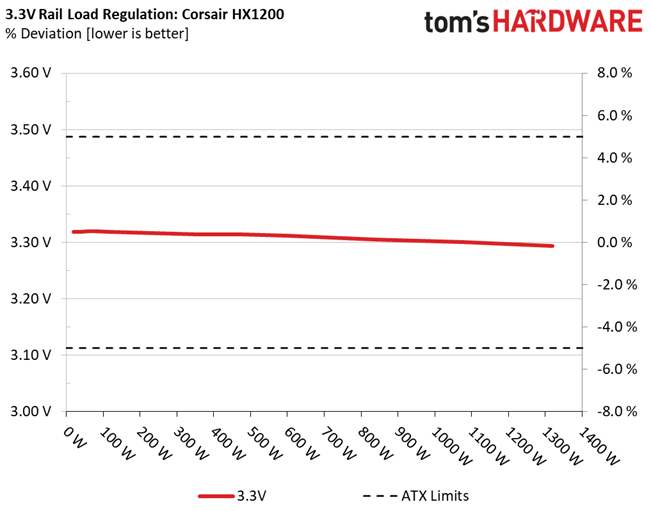
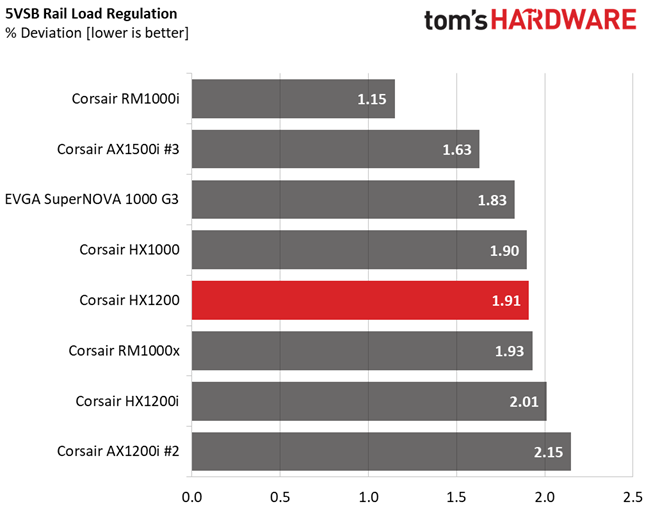
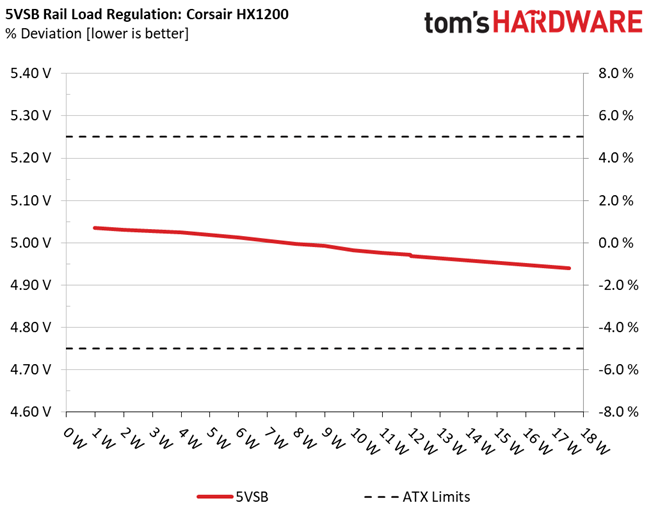
Hold-Up Time
Our hold-up time tests are described in detail here.
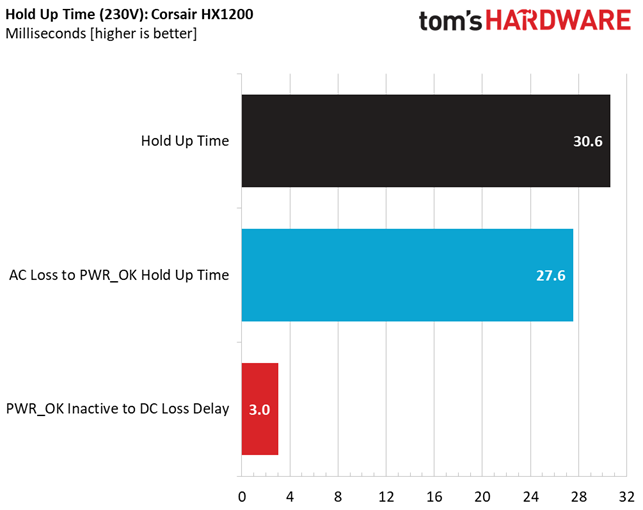
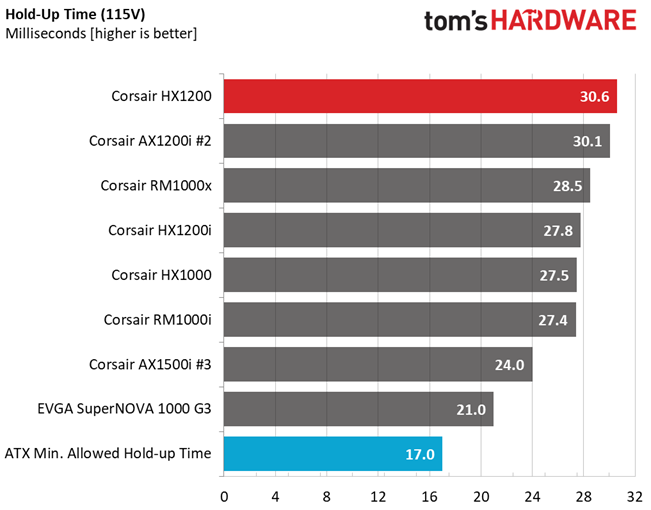
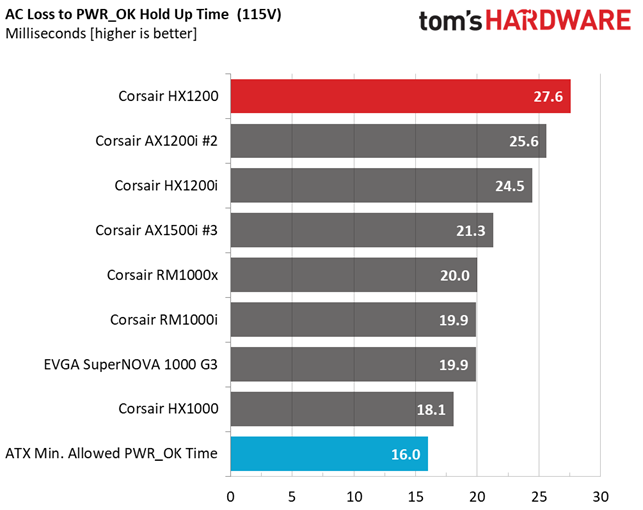
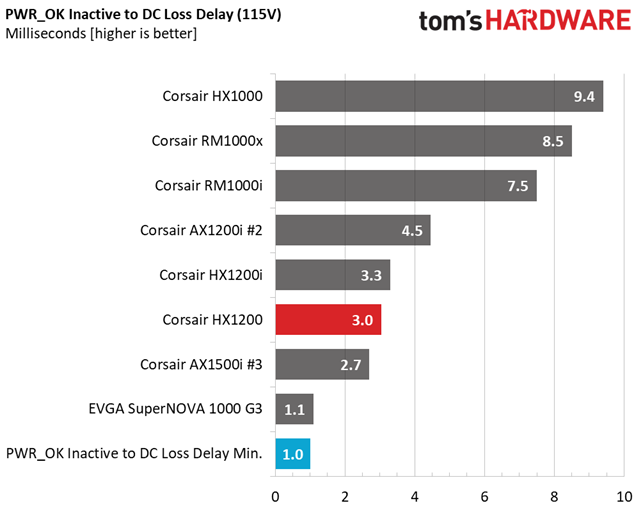
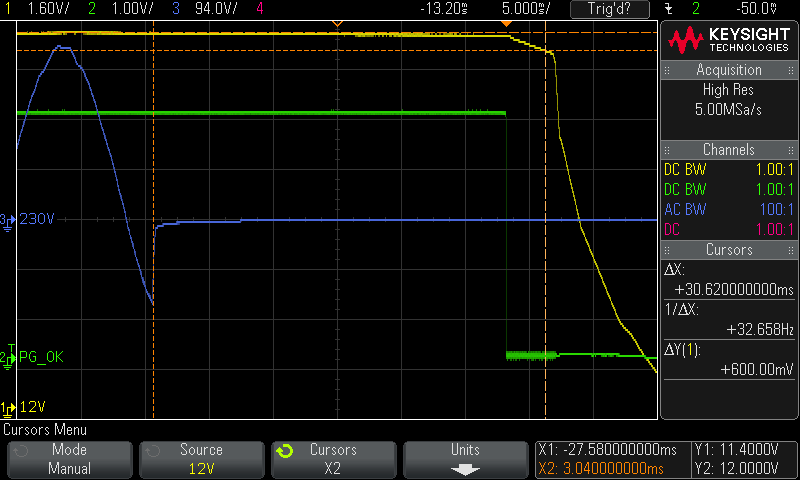
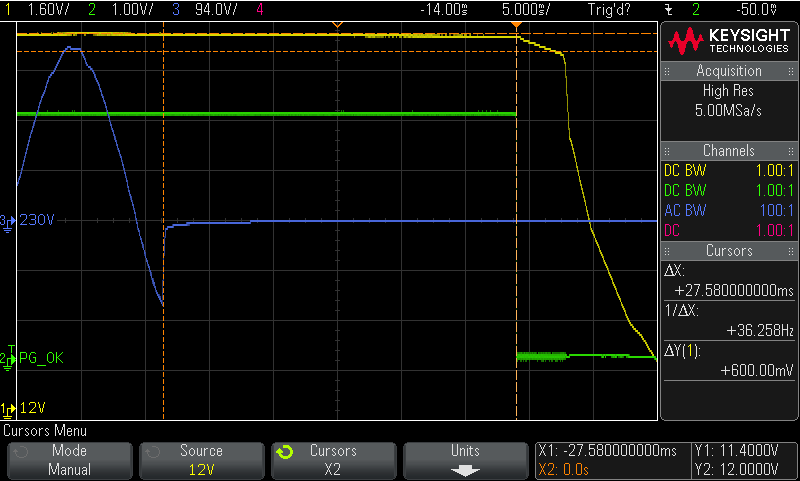
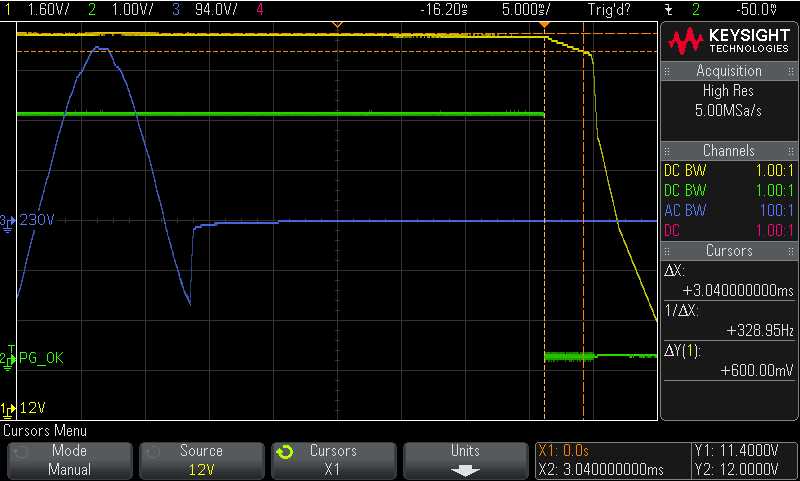
The hold-up time we measured is very long, exceeding the ATX spec's requirements by far. Corsair's power-good signal is also accurate, since it drops before the rails go out of spec.
Inrush Current
For details on our inrush current testing, please click here.
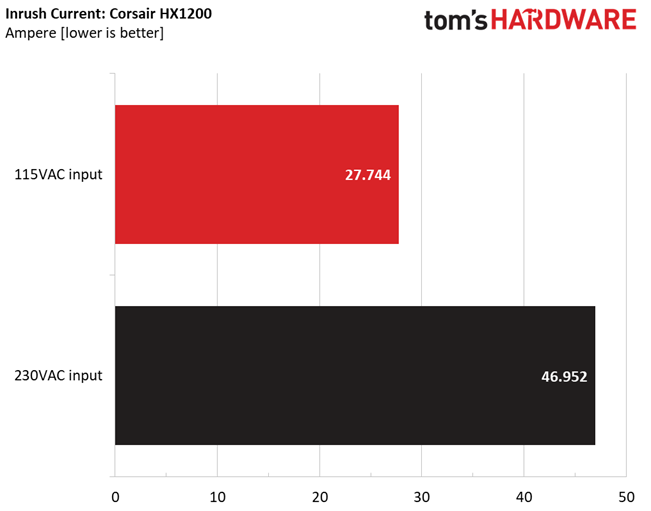
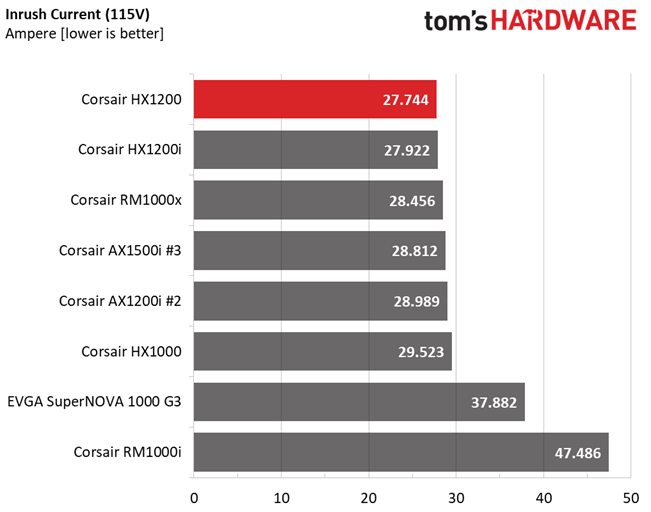
We observed low inrush current levels, especially with 115V input. That's excellent, given the HX1200's high capacity.
Load Regulation And Efficiency Measurements
The first set of tests reveals the stability of the voltage rails and the HX1200's efficiency. The applied load equals (approximately) 10 to 110 percent of the PSU's maximum load in increments of 10 percentage points.
Get Tom's Hardware's best news and in-depth reviews, straight to your inbox.
We conducted two additional tests. During the first, we stressed the two minor rails (5V and 3.3V) with a high load, while the load at +12V was only 0.1A. This test reveals whether a PSU is compatible with Intel's C6/C7 sleep states or not. In the second test, we determined the maximum load the +12V rail could handle with minimal load on the minor rails.
| Test # | 12V | 5V | 3.3V | 5VSB | DC/AC (Watts) | Efficiency | Fan Speed | Fan Noise | Temps (In/Out) | PF/AC Volts |
|---|---|---|---|---|---|---|---|---|---|---|
| 1 | 8.072A | 1.986A | 1.985A | 0.996A | 119.782 | 88.561% | 0 RPM | <6.0 dB(A) | 49.84°C | 0.985 |
| 12.166V | 5.032V | 3.318V | 5.018V | 135.253 | 40.48°C | 115.12V | ||||
| 2 | 17.182A | 2.976A | 2.981A | 1.196A | 239.633 | 91.874% | 0 RPM | <6.0 dB(A) | 51.02°C | 0.994 |
| 12.151V | 5.032V | 3.316V | 5.012V | 260.827 | 41.46°C | 115.12V | ||||
| 3 | 26.674A | 3.480A | 3.496A | 1.395A | 359.827 | 92.470% | 0 RPM | <6.0 dB(A) | 52.21°C | 0.996 |
| 12.138V | 5.026V | 3.314V | 5.005V | 389.129 | 42.28°C | 115.12V | ||||
| 4 | 36.162A | 3.982A | 3.979A | 1.600A | 479.630 | 92.571% | 0 RPM | <6.0 dB(A) | 53.55°C | 0.998 |
| 12.124V | 5.027V | 3.314V | 4.998V | 518.119 | 43.45°C | 115.13V | ||||
| 5 | 45.348A | 4.979A | 4.978A | 1.802A | 599.553 | 92.106% | 0 RPM | <6.0 dB(A) | 54.95°C | 0.998 |
| 12.108V | 5.020V | 3.312V | 4.993V | 650.935 | 44.78°C | 115.14V | ||||
| 6 | 54.560A | 5.988A | 5.985A | 2.005A | 719.431 | 91.405% | 700 RPM | 19.0 dB(A) | 41.22°C | 0.998 |
| 12.090V | 5.012V | 3.308V | 4.983V | 787.084 | 55.93°C | 115.11V | ||||
| 7 | 63.566A | 6.992A | 6.986A | 2.207A | 839.318 | 90.584% | 710 RPM | 19.2 dB(A) | 42.71°C | 0.998 |
| 12.117V | 5.008V | 3.305V | 4.977V | 926.561 | 59.37°C | 115.12V | ||||
| 8 | 72.793A | 7.998A | 7.992A | 2.410A | 959.262 | 90.006% | 830 RPM | 21.8 dB(A) | 43.66°C | 0.999 |
| 12.101V | 5.003V | 3.303V | 4.972V | 1065.785 | 61.14°C | 115.12V | ||||
| 9 | 82.456A | 8.504A | 8.514A | 2.413A | 1079.235 | 89.225% | 1165 RPM | 30.9 dB(A) | 44.56°C | 0.999 |
| 12.087V | 4.998V | 3.300V | 4.969V | 1209.563 | 62.35°C | 115.13V | ||||
| 10 | 91.696A | 9.023A | 9.007A | 3.541A | 1199.085 | 88.348% | 1310 RPM | 34.5 dB(A) | 45.36°C | 0.999 |
| 12.071V | 4.991V | 3.297V | 4.940V | 1357.237 | 63.43°C | 115.14V | ||||
| 11 | 101.758A | 9.032A | 9.017A | 3.545A | 1319.046 | 87.460% | 1525 RPM | 38.6 dB(A) | 45.51°C | 0.999 |
| 12.056V | 4.988V | 3.294V | 4.936V | 1508.169 | 64.11°C | 115.12V | ||||
| CL1 | 0.099A | 18.028A | 18.003A | 0.004A | 151.890 | 84.244% | 730 RPM | 19.5 dB(A) | 43.86°C | 0.990 |
| 12.158V | 5.017V | 3.345V | 5.070V | 180.298 | 59.99°C | 115.14V | ||||
| CL2 | 99.934A | 1.003A | 1.002A | 1.002A | 1219.611 | 88.433% | 1345 RPM | 34.7 dB(A) | 45.66°C | 0.999 |
| 12.071V | 5.002V | 3.288V | 4.986V | 1379.139 | 61.47°C | 115.14V |
Load regulation on every rail is tight, approaching the HX1200i's performance. That's to be expected, since both PSUs are based on the same platform.
The fan's noise is kept very low, even under high temperatures. It helps that the passive mode lasts a long time, and that the fan only speeds way up during our full-load and overload tests. In no case did we record a >40 dB(A) reading, which is amazing for a 1200W PSU.
Given its 80 PLUS Platinum badge, we expect this PSU to deliver at least 90% efficiency with 20% load, 92% with 50% load, and 89% at full load. As you can see from the table above, only the last condition isn't satisfied, mostly because of the high ambient temperature we test at. In comparison, the 80 PLUS organization tests at unrealistically low ambient temps of 23°C +/-5°C.
In any case, this is a solid-performing PSU that will easily deliver its full power for prolonged periods, even under high operating temperatures. At the same time, its fan won't be a major noise source.
MORE: Best Power Supplies
MORE: How We Test Power Supplies
MORE: All Power Supply Content
Current page: Load Regulation, Hold-Up Time & Inrush Current
Prev Page Teardown & Component Analysis Next Page Efficiency, Temperature & Noise
Aris Mpitziopoulos is a contributing editor at Tom's Hardware, covering PSUs.
-
davidgirgis In the Conclusion, 'TO' should be 'To'; and 'demands' should be 'depends'; and 'product' should be 'protect'.Reply -
grozzie Not another plug/connector change!. I, like many people on this site, build custom PC's, part of which includes sleeved cables. One bug bear is 2 wires into 1, which is a in in the arse. I personally like the HXi series of Corsair PSU's which only have one such connection. I also think the 24 pin ATX supply is outdated and needs revision. I can't see the point of supplying motherboards with 3.3 and 5v rails. If only 12v was supplied with any or all voltage reduction made on board life would be so much simpler and neater. By providing more noise reduction at source (the PSU) gives Motherboard manufacturers an open cart to reduce the quality of voltage regulation i.e capacitor quality, on the motherboard. Is there really a need for another PSU on the market?Reply -
panathas On the specifications table it says: "Efficiency: 80 PLUS Gold, ETA-B", which is wrong since this is a Platinum PSU.Reply -
10tacle ^^What are you talking about? Register and get on Corsair's support forums:Reply
https://sso.corsair.com/idp/AuthnEngine#/authn
Of course they have a customer support phone number: 888-222-4346 (North America customers).
Anyway, back on topic, first the $#@! miners have negatively impacted our GPU market, and now they may negatively impact our PSU market. :fou: What makes this really aggravating is that the PSU makers really can't prove a PSU was used 7x24 for heavy mining operation.
Worse, even if PSU vendors like Corsair offer a mining-specific PSU for less money with just say a 2-3 year warranty, nothing would stop the miners from buying the full 10-year variant. This mining craze is becoming a real pain to we PC enthusiasts. -
10tacle You are making everyone's head hurt. If you want to complain about Corsair, then do so on Corsair's customer support forums and social media. Also, just FYI, Tom's only reviews what is sent to them. They do not go "cherry pick" buy products and review them. For someone who is an alleged "original reader" of Tom's I'd have expected you to understand that.Reply -
jonnyguru Reply20057343 said:Not another plug/connector change!. I, like many people on this site, build custom PC's, part of which includes sleeved cables. One bug bear is 2 wires into 1, which is a in in the arse. I personally like the HXi series of Corsair PSU's which only have one such connection. I also think the 24 pin ATX supply is outdated and needs revision. I can't see the point of supplying motherboards with 3.3 and 5v rails. If only 12v was supplied with any or all voltage reduction made on board life would be so much simpler and neater. By providing more noise reduction at source (the PSU) gives Motherboard manufacturers an open cart to reduce the quality of voltage regulation i.e capacitor quality, on the motherboard. Is there really a need for another PSU on the market?
Bro.. You're all over the place. :D
So only the 24-pin is pin incompatible with the Type 3 cables. And yes... it's because of the extra sense wires. If you're really going to get all wound up about having to do 2-to-1 wires when doing custom cables, you know what you should do? Don't do 2-to-1 wires. They're only sense wires. The lack of them doesn't prevent the PSU from working. It'll just make your voltage regulation "as bad" as any other PSU that doesn't have the sense wires.
Yes. The ATX spec is out of date. But Intel wrote it and nobody is going ot implement a new standard without Intel's blessing. They even released a whole new ATX design guide last month that changes almost everything (T1 timing, T3 timing, standby efficiency..) but DID NOT TOUCH the pinout (they made -12V "optional", but that's hardly much of a change).
-
beatnutz Jellwood: I find it hard to believe that someone who does not know how to write a proper sentence is preparing any students for anything. Let alone the ACT.Reply -
beatnutz Jellwood: I find it hard to believe that someone who does not know how to write a proper sentence is preparing any students for anything. Let alone the ACT.Reply
